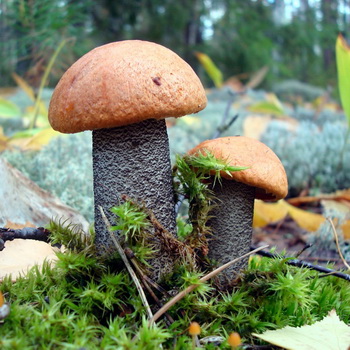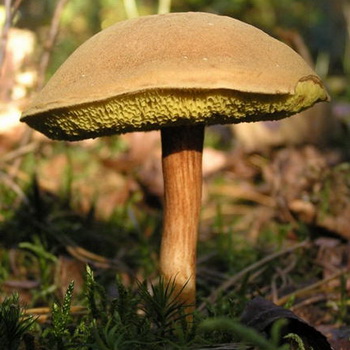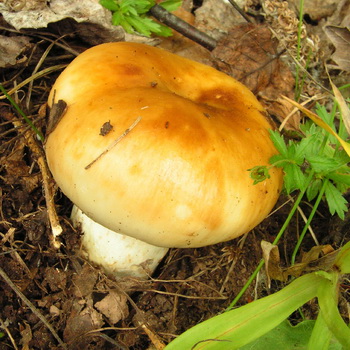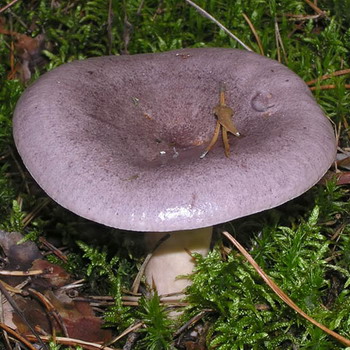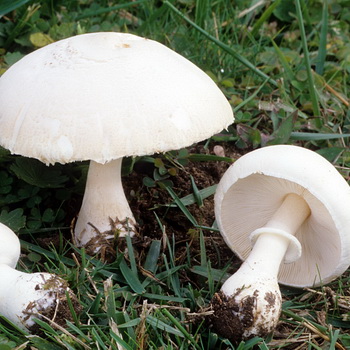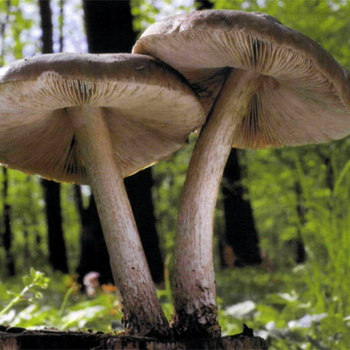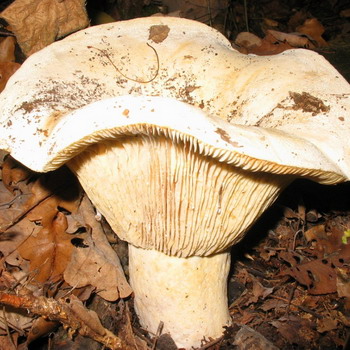Mushroom hygrophor: photo and description
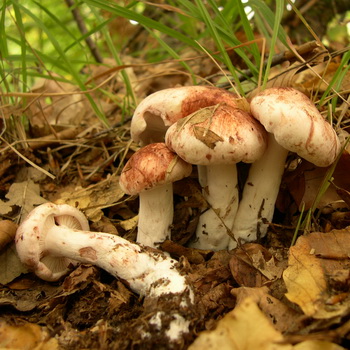
Some species of hygrophore are edible, no toxic species have been identified.
On this page you can read the description and see a photo of the hygrophoric fungus of the most common varieties: white (sweet), late (brown), golden, reddish, pinkish, fragrant, larch and early. The description of hygrophors of different species is similar, but there are a number of differences.
Content
Hygrophor white (olive white, sweetened)
Category: edible.
White hydrophore hat (diameter 4-11 cm): grayish-olive or grayish-brown, smooth, with fibrous edges. In young mushrooms, hemispherical or bell-shaped, which over time becomes more widespread. It is sometimes covered with a mucous coverlet or slight pubescence, as well as barely noticeable tubercles.
Leg (height 4-12 cm): white, with scaly bands. Solid and fibrous, cylindrical in shape, often curved.
Olive-white hygrophoric plates are light and very rare.
Pulp: white, delicate, very fragile.
Doubles: are absent.
When growing: from mid-August to early October in Europe and North America.

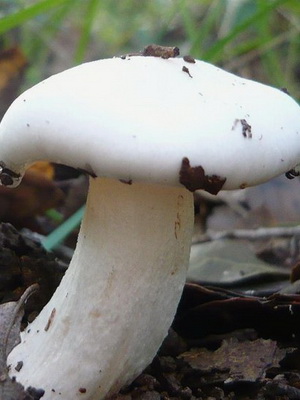
Where can I find: only in coniferous - spruce and pine - forests, in humid places and lowlands.
Eating: usually in the form of pickles. Gigrofor white very tasty, slightly sweet, for which he received the name mushroom sweetened. It is recommended to use only young specimens in cooking.
Application in traditional medicine: not applicable.
Other names: Hygrophor olive-white, sweetened.
Mushroom hygrophor late (brown)
Category: edible.
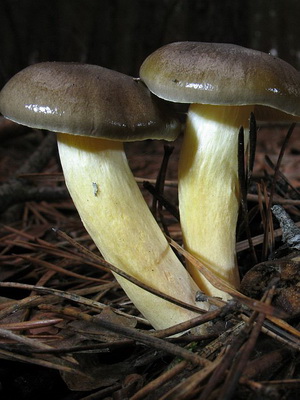
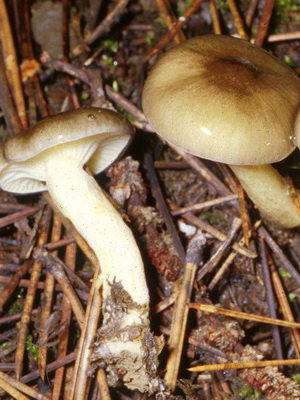
Hat late hygrophora (Hygrophorus hypothejus) (diameter 3-7 cm): olive-brown or brown-brown, slightly convex, with the edges turned inward. The surface is mucous, the edges are lighter than the center. Due to the color of the cap, this mushroom is often called brown hygrophor.
Leg (height 4-12 cm): yellowish or olive, solid, smooth, cylindrical. Old mushrooms may be hollow. Young hygrophors have a ring that disappears over time.
Records: yellow or light orange, rare and thick, weakly grow to the stem. Sometimes with the remnants of the bedspread.
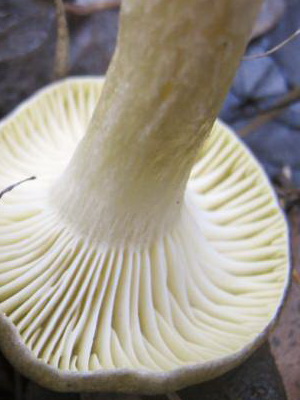
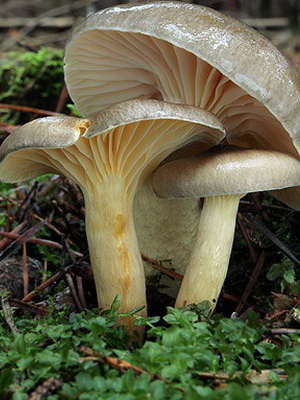
Pulp: odorless, fragile. In a hat almost white, in a leg yellowish.
Doubles: are absent.
When growing: from mid-September to almost the end of November. It appears even when the first snow falls, which is why it is called “late”.
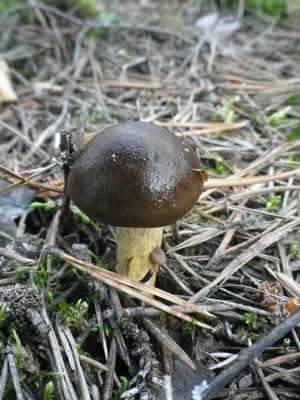
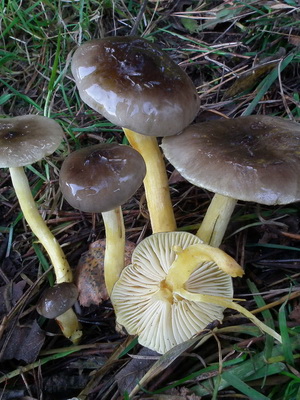
Where can I find: next to pine trees in conifers or mixed
Eating: young late hygrophors have a very pleasant taste and are used to make soups or main dishes. This mushroom is especially popular in the cooking of the Balkan countries.
Application in traditional medicine: not applicable.
Other names: brown gigrofor, wood lice.
Mushroom hygrophor fragrant
Category: edible.
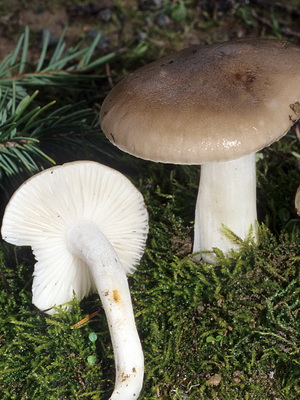
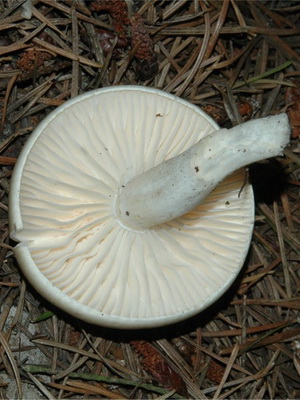
Hat of fragrant hygrophor (Hygrophorus agathosmus) (diameter 4-10 cm): gray or brownish, the edges are usually lighter than the center, smooth or slightly sticky. The young mushroom is slightly convex, with time it becomes almost completely flat.
Leg (height 4-12 cm): gray, but lighter than the hat, solid, cylindrical in shape. Occasionally flattened, with scales along the entire length.
Records: white or grayish, rare and thin, sometimes branched. Weakly grow to the leg.
Pulp: white or gray, occasionally with an olive tint. Loose, soft and watery. The name "fragrant" this mushroom received due to a strong almond smell. In wet weather, you can hear it, even being a meter away from the hygrophor.
Doubles: are absent.
When growing: from late August to early October. It is especially common in the Far East.
Where can I find: on the calcareous soils of pine-spruce forests, sometimes next to fir.
Eating: very tasty in salted and pickled form.
Application in traditional medicine: not applicable.
Other names: fragrant gigrofor, fragrant gigrofor, good gigrofor.
Gigrofor golden
Category: conditionally edible.
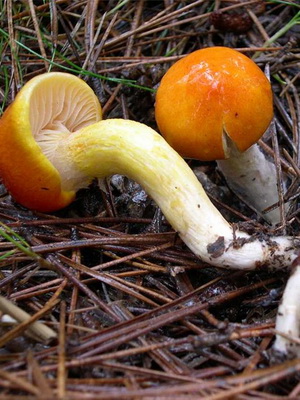
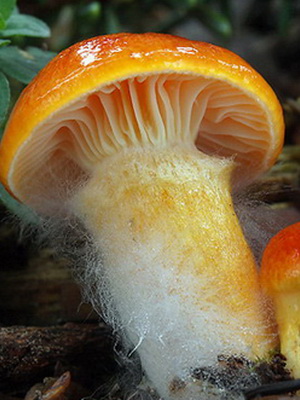
Own name golden hygrophor (Hygrophorus chrysodon) received due to small yellow blotches across the surface.
Hat (diameter 4-8 cm): the young mushroom is slightly convex, with time it becomes almost spread.
Leg (height 4-7 cm): very tight, but may be slightly curved. Often with yellowish scales along the entire length.
Records: rare and thick, cream color.
Pulp: white, with an extremely unpleasant specific odor.
Doubles: are absent.
When growing: from early August to mid-October in the northern countries of the Eurasian continent and North America.
Where can I find: only in deciduous forests, most often near oaks and lindens.
Eating: fresh as an ingredient in soups.
It does not have good taste.
Application in traditional medicine: not applicable.
Mushroom hygrophor reddish
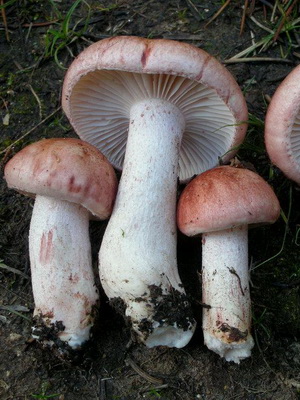

Category: conditionally edible.
Red hygrophoric hat (Hygrophorus erubescens) (diameter 4-11 cm): young mushrooms are white-pink, the rest have a saturated purple color. Has a conical or slightly convex shape. The edges are bent to the inside and slightly pubescent. A little sticky to the touch.
Leg (height 4-10 cm): white, with pink spots, thick and even, cylindrical in shape.
Records: pinkish white, thick, rare.
Doubles: Hygrophorus russula (Hygrophorus russula), which has a larger hat and grows only in deciduous forests.
When growing: from mid-July to the end of September in the northern regions of Russia.
Where can I find: only in coniferous forests, often near fir trees.
Eating: since fresh mushroom is very bitter in taste and belongs to the conditionally edible group, it is used only in a salty and pickled form.
Application in traditional medicine: not applicable.
Other names: hygrophor blushing.
Gigrofor larch
Category: edible.
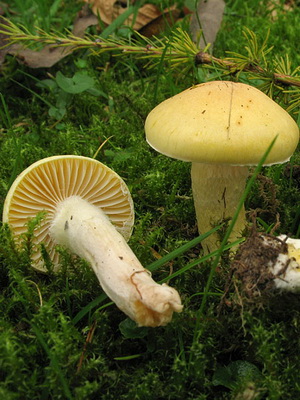
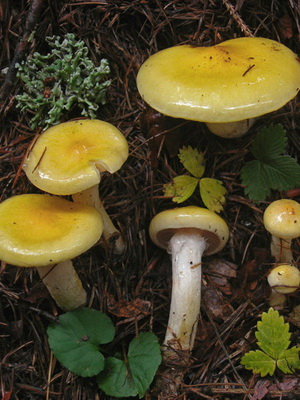
Hat larch gyrophor (Hygrophorus lucorum) (diameter 3-7 cm): yellow or bright lemon color, mucous, with open edges.
Leg (height 3-8 cm): cylindrical in shape with a slight thickening at the very base. Sometimes with mucous filaments connecting the leg to the cap.
Records:slightly lighter than the surface of the cap.
Pulp: white or light yellow.
Doubles: are absent.
When growing: from the beginning of August to the end of September in the southern regions of European countries.
Where can I find: most often under larch trees.
Eating: completely edible mushroom, which can be consumed in almost any form.
Application in traditional medicine: not applicable.
Other names: hygrophor yellow.
Mushroom hygrophoric spotted
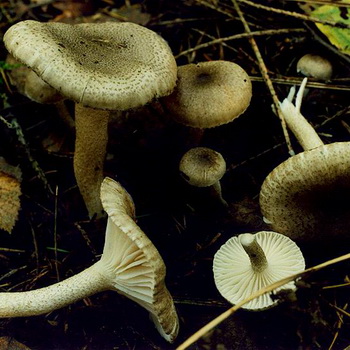 Category: edible.
Category: edible.
Hat hygrophorus spotted (Hygrophorus pustulatus) (diameter 4-7 cm): gray, gray-olive or gray-brown, shiny and sticky in wet weather. In young mushrooms, it is slightly convex, with time it becomes prostrate.The edges are usually bent and lighter than the center, covered with small dark dots, thanks to which the mushroom got its name.
Leg (height 4-7 cm): solid, lighter than a hat. It has a cylindrical shape, but may be slightly curved. Sometimes there is a dark "belt".
Pulp: very fragile and delicate. White color does not change at the place of the break. It does not have a pronounced smell.
Doubles: are absent.
When growing: from the beginning of September to mid-November in almost all countries of Northern Europe.
Where can I find: in spruce and mixed forests. Usually "burrows" in moss and forest litter.
Eating: delicious mushroom, with a delicate and sweet smell. Not suitable for pickling and pickling. In Western Europe, popular as an ingredient in soups.
Application in traditional medicine: not applicable.
Other names: bubble hygrophore.
Gigrofor early
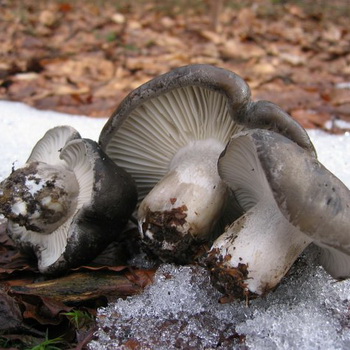 Category: edible.
Category: edible.
Hat early hygrophore (Hyprophorus marzuolus) (diameter 5-11 cm): smooth, dry and elastic, at first gray-white and convex, with time it becomes lead or almost black and almost flat. Occasionally, it may be depressed. The surface is wavy and curved. Sometimes the tip is covered with a light fluff.
Leg (height 4-10 cm): cylindrical, short and slightly curved, white or gray. At the top under a hat with small scales.
Pulp: white or grayish. The smell of cut hygrophor is very weak.
Doubles: absent, since this fungus grows in early spring, when the remaining edible and poisonous mushrooms have not yet appeared.
When growing: from early March to mid-May in the temperate zone of the Eurasian continent and North America. The remaining hygrophoric begin to appear mainly in August - September.
Where can I find: in coniferous and deciduous forests with nutritious soil.
Eating: usually in soups and meat dishes.
Application in traditional medicine: not applicable.
Other names: Gigrofor March, snow mushroom.
Pink hygrophoric mushroom
Category: edible.
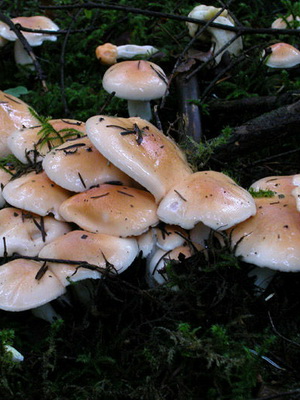

Hat of a pinkish hygrophor (Hygrophorus pudorinus) (diameter 5-12 cm): usually pink-salmon, in adult mushrooms in the form of a hemisphere or outstretched. Fleshy, slightly mucous, with a small tubercle and pubescence over the entire surface.
Leg (height 5-14 cm): cylindrical, slightly paler than the cap.
Records: frequent and thick.
Doubles: are absent.
When growing: from late August to late September in temperate European and North American countries.

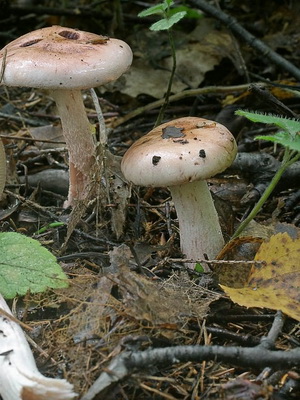
Where can I find: usually next to fir or spruce, less commonly in mixed forests.
Eating: raw or pickled, subject to preliminary heat treatment.
Application in traditional medicine: not applicable.
